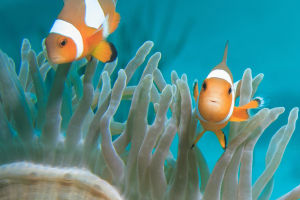Adorable Lovebirds Unite
Hey, Lykkers! Have you ever been captivated by the charming and colorful nature of lovebirds?
Have you ever been captivated by the charming and colorful nature of lovebirds? These affectionate little creatures not only make wonderful companions but also bring joy and vibrant energy into our lives.
Let’s explore the enchanting world of lovebirds and uncover why they are such beloved pets.
What Are Lovebirds?
Lovebirds are small, affectionate parrots native to Africa, known for their striking colors and playful personalities. There are nine species of lovebirds, with the Peach-faced lovebird being the most common among pet owners. Typically, lovebirds measure around 5 to 7 inches in length and have a lifespan of 10 to 15 years, making them a long-term commitment for anyone considering adding one to their family.
Why Choose Lovebirds?
There are many reasons why we might fall in love with these beautiful birds:
Affectionate Companionship: Lovebirds are social creatures that thrive on companionship. They often bond closely with their owners, displaying affection through gentle nibbles, cuddles, and playful behavior.
Vibrant Colors: Lovebirds come in a variety of stunning colors, including green, yellow, blue, and peach. Their vibrant feathers make them a beautiful addition to any home.
Playful Personalities: These little birds are incredibly playful and curious. They love to explore their surroundings, play with toys, and engage in activities that stimulate their minds.
Setting Up a Lovebird Habitat
Creating a suitable habitat for our lovebirds is essential for their well-being. Here are some key elements to consider when setting up their home:
Cage Size: Ensure the cage is spacious enough for them to fly and play. A minimum size of 24” x 24” x 24” is recommended for a pair of lovebirds.
Perches: Provide multiple perches made of different materials and thicknesses to keep their feet healthy and engaged.
Toys: Lovebirds love to chew and play, so include a variety of toys, such as swings, bells, and foraging toys, to keep them entertained.
Food and Water: A balanced diet is crucial for their health. Offer high-quality pellets, fresh fruits, and vegetables, along with clean water daily.
Training and Socialization
Training our lovebirds is essential to ensure they are well-adjusted and happy. Here are some tips for effective training and socialization:
Start Early: Begin handling and socializing our lovebirds at a young age to build trust and a strong bond.
Positive Reinforcement: Use treats and praise to reward desired behaviors, encouraging our lovebirds to learn and adapt.
Regular Interaction: Spend quality time with our lovebirds daily, engaging in play and communication to reinforce our bond.
Common Lovebird Behaviors
Understanding the typical behaviors of lovebirds can help us nurture a healthy environment for them:
Preening: Lovebirds often preen each other as a sign of affection. This behavior also helps keep their feathers clean and healthy.
Chirping: These birds are vocal and will often chirp to communicate. They may mimic sounds or words if they are socialized properly.
Cuddling: Lovebirds are known for their cuddly nature. They enjoy snuggling together, which is a delightful sight for any bird lover.
In conclusion, lovebirds are charming companions that bring joy, color, and laughter into our lives. With their affectionate personalities and playful antics, they make delightful pets for those willing to invest time and care. If we’re considering welcoming a lovebird into our family, let’s ensure we provide a loving environment filled with stimulation, companionship, and plenty of affection. Together, we can create a beautiful bond that lasts a lifetime!
How to Take Care of a Lovebird: Tips for New Bird Owners
Video by LoveBirds Awesomeness


